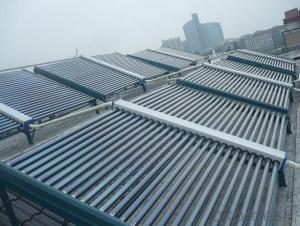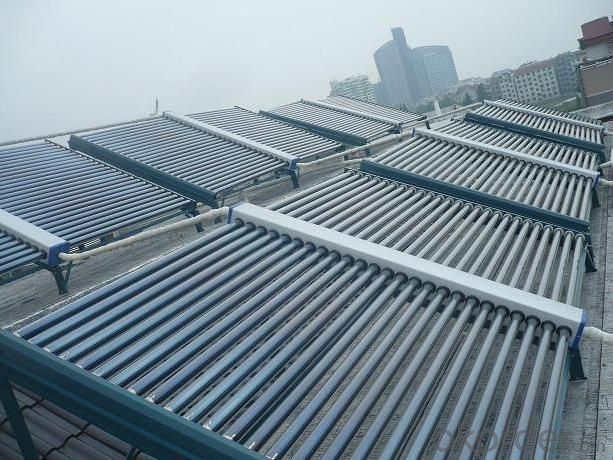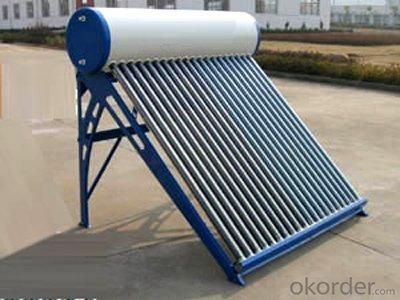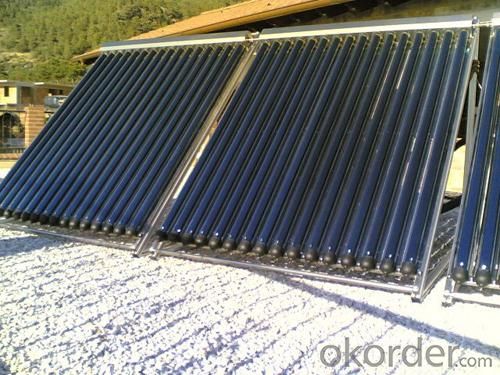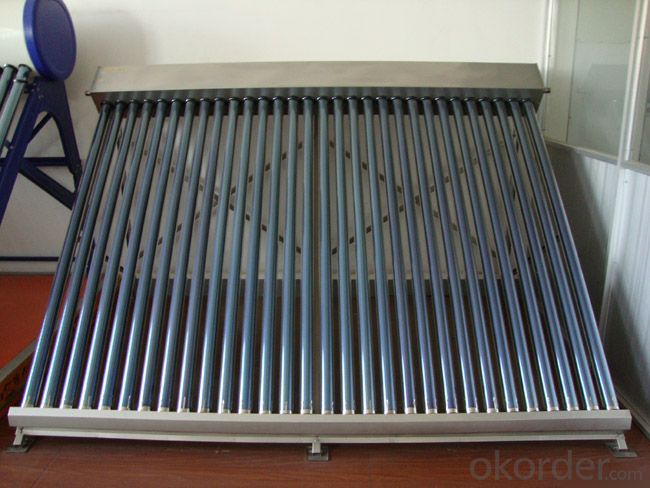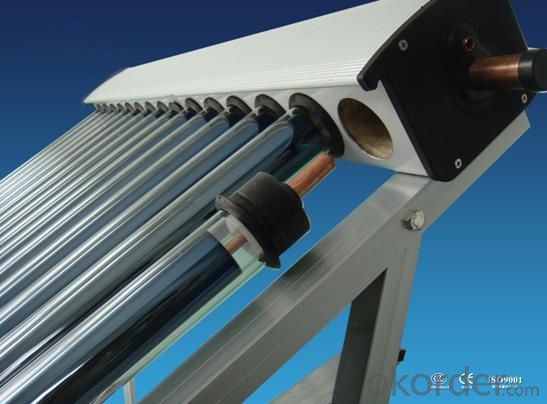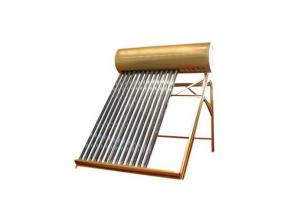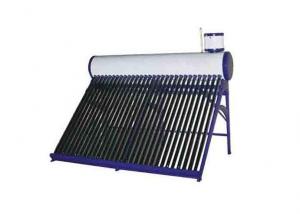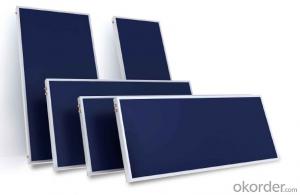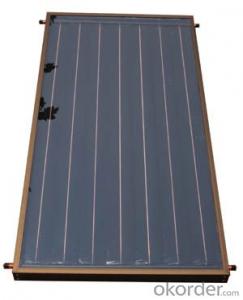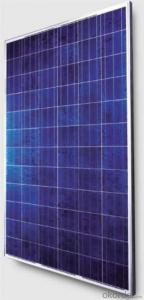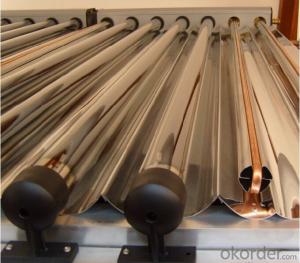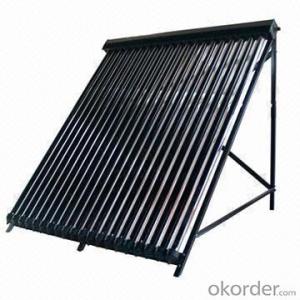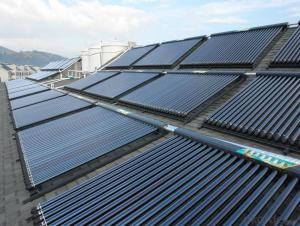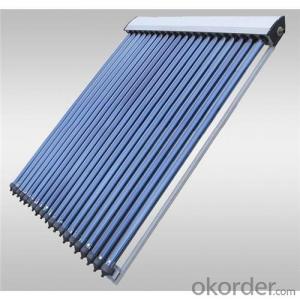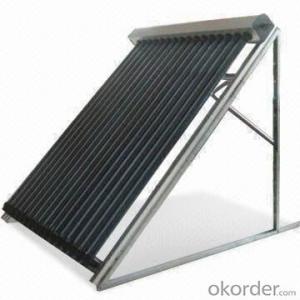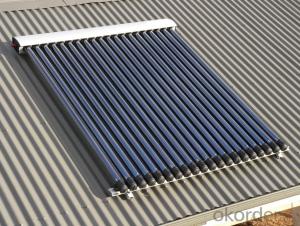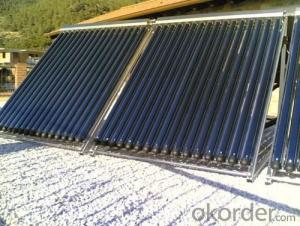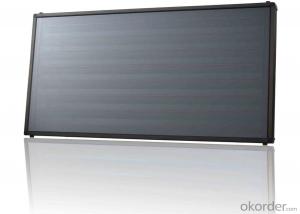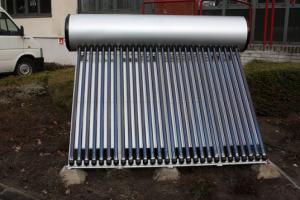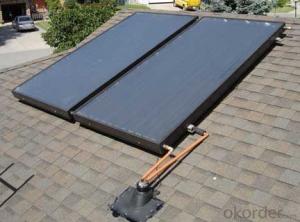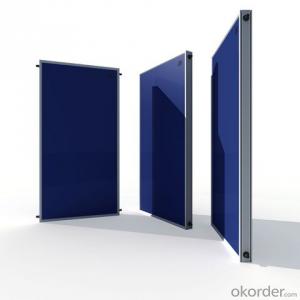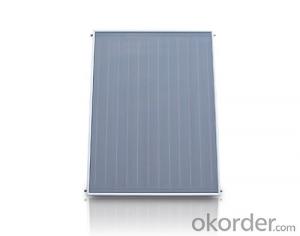12 Tubes Concentrating Solar Collectors En12975
- Loading Port:
- China main port
- Payment Terms:
- TT OR LC
- Min Order Qty:
- 5 set
- Supply Capability:
- 10000 set/month
OKorder Service Pledge
OKorder Financial Service
You Might Also Like
Specification
manifold (inner) | red copper |
manifold (exterior) | aluminum alloy |
glass tube dimensions | 58mm * 1800mm |
daily efficiency | ≥55% |
heat preservation | 72 hours |
hail resistance | 25mm |
max pressure | 7 bar |
coating of vacuum tube | ALN/AIN-SS/CU |
heat pipe | anti-freezing > -35 degree |
certificate | Solar Keymark, EN12975,SRCC |
Serious Product
Models | L*W*H mm | Vacuum tube | Power output | Efficiency | Header mm | Frame | container loading 20FT/40HQ sets | Gross Weight kg |
SHC-8 | 1917*910*133 | 58*1800*8pcs | 939W | 0.668 | Φ35/1.0 | AL alloy | 185/445 | 27 |
SHC-10 | 1917*1130*133 | 58*1800*10pcs | 1189W | 159/385 | 33 | |||
SHC-12 | 1917*1350*133 | 58*1800*12pcs | 1440W | 149/358 | 40 | |||
SHC-15 | 1917*1680*133 | 58*1800*15pcs | 1815W | 120/290 | 49 | |||
SHC-18 | 1917*2010*133 | 58*1800*18pcs | 2191W | 100/242 | 59 | |||
SHC-20 | 1917*2230*133 | 58*1800*20pcs | 2442W | 87/210 | 66 | |||
SHC-22 | 1917*2450*133 | 58*1800*22pcs | 2692W | 83/202 | 72 | |||
SHC-24 | 1917*2670*133 | 58*1800*24pcs | 2943W | 77/188 | 79 |
Packaging & Delivery
Packaging Details: | Exporting Carton with big foaming protection |
Delivery Detail: | In 10-15 days |
Loading Quantity
Model | Tube | Tube Q.T.Y | Loading Q.T.Y/40HQ |
GSC15 | 58*1800mm | 15pcs | 315sets |
GSC18 | 58*1800mm | 18pcs | 265sets |
GSC20 | 58*1800mm | 20pcs | 248sets |
GSC22 | 58*1800mm | 22pcs | 225sets |
GSC25 | 58*1800mm | 25pcs | 200sets |
GSC30 | 58*1800mm | 30pcs | 168sets |
Details of solar collector:
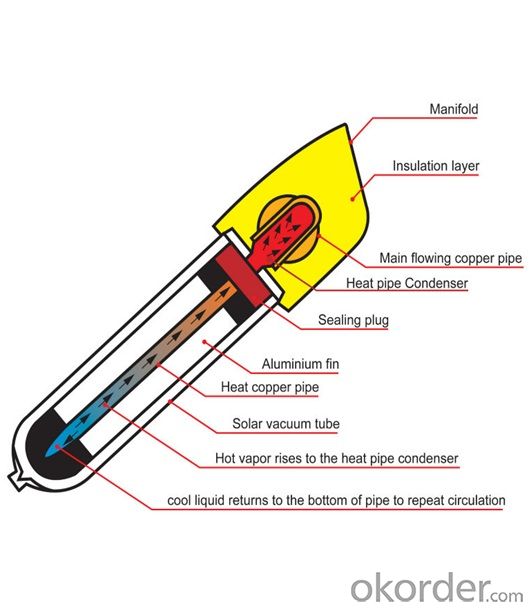
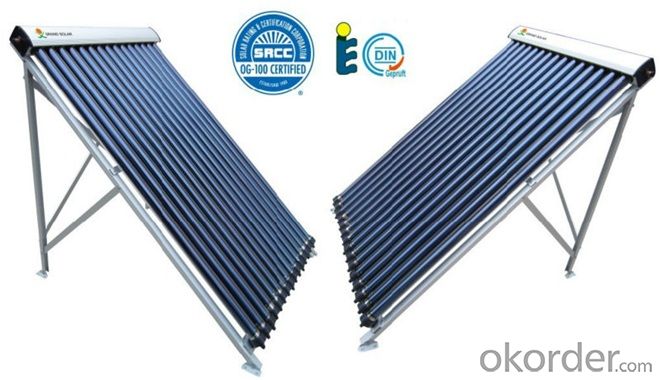

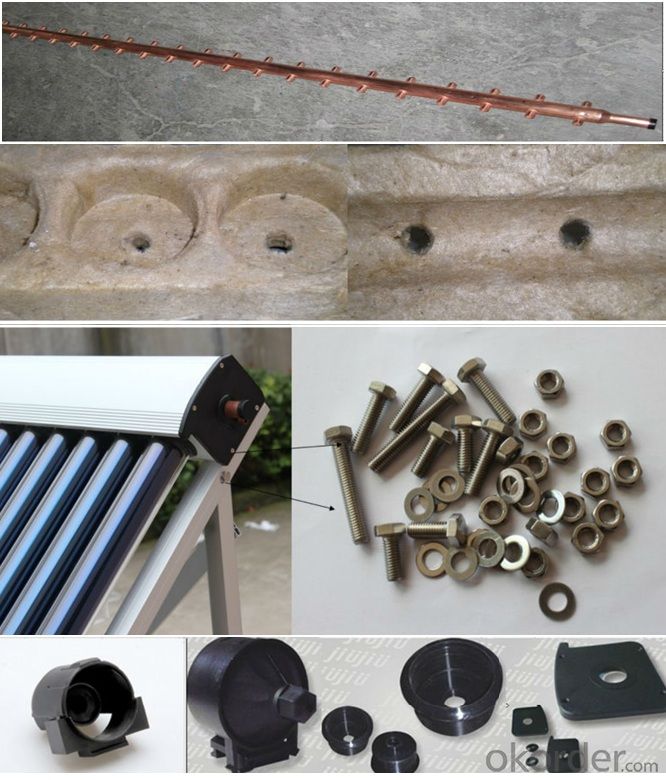
- Q: Can solar collectors be installed on pitched roofs?
- Yes, solar collectors can be installed on pitched roofs. In fact, pitched roofs are often ideal for solar panel installation as they provide a suitable angle for capturing maximum sunlight throughout the day.
- Q: Can solar collectors be used in areas with high levels of dust or dirt?
- Yes, solar collectors can be used in areas with high levels of dust or dirt. However, it is important to regularly clean the collectors to maintain their efficiency. Additionally, using protective measures like tilt or rinse systems can help minimize the impact of dust or dirt on the performance of solar collectors.
- Q: Can solar collectors be used for heating animal shelters?
- Yes, solar collectors can be used for heating animal shelters. Solar collectors, such as solar water heaters or solar air heaters, can harness the sun's energy and convert it into heat, which can be used to warm the shelters. This sustainable and cost-effective solution can help provide a comfortable environment for animals while reducing the reliance on traditional heating methods.
- Q: Are solar collectors suitable for multi-unit buildings?
- Yes, solar collectors are suitable for multi-unit buildings. They can be installed on the roof or exterior walls of the building to harness sunlight and generate renewable energy. This can help reduce electricity costs for each unit and promote sustainability in a shared living environment. Additionally, advancements in solar technology have made it easier to integrate solar collectors into existing infrastructure, making them a viable option for multi-unit buildings.
- Q: Can solar collectors be used for heating military bases?
- Yes, solar collectors can be used for heating military bases. Solar thermal systems can provide efficient and sustainable heating solutions by capturing the sun's energy and converting it into heat, which can be used for space heating, water heating, and other heating needs in military bases. This renewable energy source can help reduce dependence on fossil fuels, lower operational costs, and contribute to the overall sustainability and resilience of military installations.
- Q: How do solar collectors perform during winter months?
- Solar collectors can still perform well during winter months, although their efficiency may be slightly reduced compared to the summer months. The performance of solar collectors during winter is influenced by several factors. Firstly, the angle and orientation of the solar collectors play a significant role. In winter, the sun is lower in the sky and the days are shorter, so it is important to have the collectors at an optimal angle and facing south to maximize their exposure to sunlight. Adjusting the angle of the collectors can help capture more sunlight during the shorter winter days. Secondly, weather conditions can affect the performance of solar collectors. Cloudy or overcast days can reduce the amount of sunlight reaching the collectors, which in turn affects their efficiency. However, even on cloudy days, solar collectors can still generate some heat, albeit at a lower rate. Thirdly, the ambient temperature also impacts the performance of solar collectors. Cold temperatures can affect the heat transfer from the collectors to the heat transfer fluid or to the storage system. Insulation and proper design of the collectors and piping systems can help mitigate heat losses and maintain efficiency during winter. Lastly, the usage of a backup heating system can supplement the solar collectors during periods of low sunlight or extreme cold temperatures. This ensures a constant supply of heat even when solar energy is not sufficient. In conclusion, while the performance of solar collectors may be slightly reduced during winter months due to lower sunlight intensity and shorter days, they can still generate heat and contribute to the overall energy savings and sustainability of a building or system. Proper design, orientation, and maintenance can help maximize their efficiency even in colder climates.
- Q: Can solar collectors be used for heating large buildings?
- Yes, solar collectors can be used for heating large buildings. Solar thermal systems, which use solar collectors to capture and convert sunlight into heat energy, can effectively provide heating for large buildings. These collectors absorb solar radiation and transfer the captured heat to a fluid, which is then used to heat the building's water or air systems. By utilizing solar collectors, large buildings can significantly reduce their reliance on traditional heating systems, thereby saving energy and reducing greenhouse gas emissions.
- Q: What is the best orientation for solar collectors?
- The best orientation for solar collectors is typically facing south in the northern hemisphere and facing north in the southern hemisphere. This allows them to receive maximum exposure to the sun throughout the day, optimizing energy generation.
- Q: Are solar collectors eligible for government incentives?
- Yes, solar collectors are typically eligible for government incentives, such as tax credits and grants, as they are considered a renewable energy source that helps to reduce reliance on fossil fuels and decrease greenhouse gas emissions. These incentives aim to promote the adoption of solar technology and make it more affordable for individuals and businesses to invest in solar collectors.
- Q: What is the impact of dust and dirt on solar collector efficiency?
- The presence of dust and dirt on solar collectors can significantly reduce their efficiency. These particles can block sunlight from reaching the surface of the collectors, thereby decreasing the amount of energy that can be converted into electricity or heat. Additionally, dust and dirt can create a layer of insulation on the surface of the collectors, which can lead to overheating and further reduction in efficiency. Regular cleaning and maintenance of solar collectors is crucial to ensure optimal performance and maximize energy output.
Send your message to us
12 Tubes Concentrating Solar Collectors En12975
- Loading Port:
- China main port
- Payment Terms:
- TT OR LC
- Min Order Qty:
- 5 set
- Supply Capability:
- 10000 set/month
OKorder Service Pledge
OKorder Financial Service
Similar products
Hot products
Hot Searches
Related keywords
